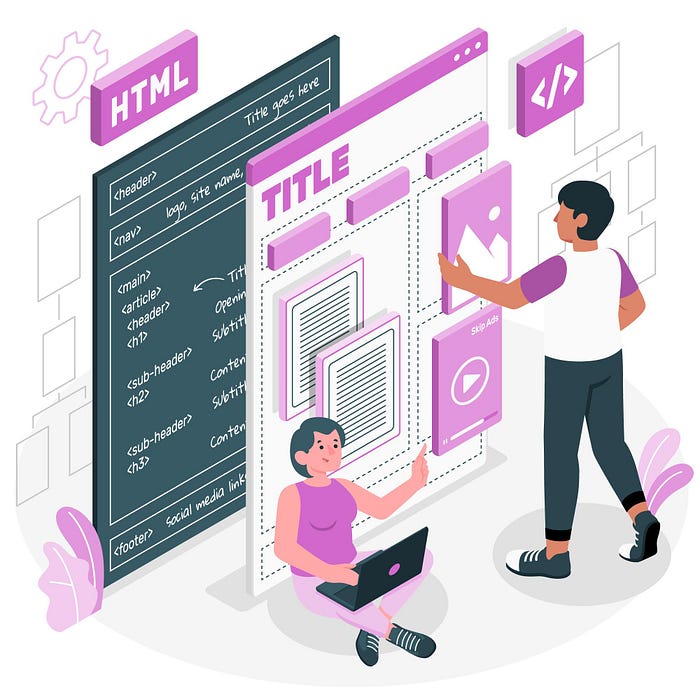HTML5 Conversion Services: Transform Your Legacy eLearning Content
 vinay Bommena
vinay BommenaThe rapid evolution of technology has significantly impacted the way educational content is delivered and consumed. Legacy courses, often built using outdated technologies like Adobe Flash or older LMS platforms, can pose significant challenges in terms of accessibility, compatibility, and user engagement. Converting these legacy courses to HTML5 has become essential to ensure that educational materials remain relevant, accessible, and effective in the modern digital landscape. This article explores the importance, process, and benefits of converting legacy courses to HTML5.

Why Convert Legacy Courses to HTML5?
Enhanced Compatibility and Accessibility
HTML5 is a robust, cross-platform solution that ensures content is accessible on a wide range of devices, including smartphones, tablets, and desktops. Unlike Flash, which is no longer supported by most browsers and mobile devices, HTML5 content is universally compatible, ensuring that learners can access educational materials anytime, anywhere.
Improved User Experience
HTML5 offers superior multimedia capabilities, including audio, video, and interactive elements that enhance the learning experience. Its support for responsive design ensures that content adjusts seamlessly to different screen sizes and orientations, providing a consistent and engaging experience across all devices.
Future-Proofing Educational Content
With continuous updates and widespread adoption, HTML5 is poised to remain a standard for web development. Converting legacy courses to HTML5 ensures that educational content remains up-to-date with current technologies, reducing the need for frequent overhauls and ensuring long-term viability.
The Process of Converting Legacy Courses to HTML5
Assessment and Planning
Content Inventory: Conduct a thorough inventory of existing course materials, identifying which elements need conversion and which can be retained or updated.
Technical Review: Assess the technical requirements of the legacy content, including media files, interactive components, and third-party integrations.
Project Planning: Develop a detailed project plan outlining the scope, timeline, and resources required for the conversion process.

Content Extraction and Reorganization
Source Code Analysis: Extract the source code and assets from the legacy course. This step is crucial for understanding the structure and components that need conversion.
Content Mapping: Map the existing content to the new HTML5 structure, ensuring that all educational elements are accounted for and appropriately reorganized.
Design and Development
Responsive Design: Implement responsive design principles to ensure that the content is accessible and visually appealing on all devices.
Multimedia Integration: Utilize HTML5’s multimedia capabilities to incorporate audio, video, and interactive elements, enhancing the overall learning experience.
Interactivity and Engagement: Develop interactive components such as quizzes, drag-and-drop activities, and simulations using HTML5 and JavaScript.
Testing and Quality Assurance
Cross-Browser Testing: Conduct comprehensive testing across different browsers and devices to ensure compatibility and functionality.
Usability Testing: Engage real users to test the converted content, gathering feedback to identify and address usability issues.
Accessibility Testing: Ensure that the content meets accessibility standards (such as WCAG) to cater to learners with disabilities.
Deployment and Maintenance
LMS Integration: Integrate the converted course into the Learning Management System (LMS), ensuring seamless functionality and tracking capabilities.
User Training: Provide training and support materials to help educators and learners adapt to the new HTML5-based course.
Ongoing Maintenance: Establish a maintenance plan to keep the content updated and address any technical issues that arise post-deployment.
Benefits of HTML5-Based Courses
Scalability and Flexibility
HTML5 courses are easily scalable, allowing educational institutions to expand their offerings without significant additional investments. The flexible nature of HTML5 enables quick updates and modifications, ensuring that content remains current and relevant.
Enhanced Learning Outcomes
The interactive and multimedia-rich nature of HTML5 courses can lead to improved learner engagement and retention. By providing a more immersive learning experience, educators can achieve better educational outcomes.
Cost Efficiency
While the initial investment in converting legacy courses to HTML5 can be significant, the long-term cost savings are substantial. Reduced dependency on proprietary technologies, lower maintenance costs, and the ability to update content in-house contribute to overall cost efficiency.

Conclusion
The conversion of legacy courses to HTML5 is a strategic investment that offers numerous benefits, including enhanced compatibility, improved user experience, and future-proofed educational content. By following a systematic approach to conversion and leveraging the capabilities of HTML5, educational institutions can ensure that their courses remain relevant, accessible, and engaging in the digital age. As technology continues to evolve, embracing HTML5 is not just a necessity but an opportunity to enrich the learning experience and achieve better educational outcomes.
Subscribe to my newsletter
Read articles from vinay Bommena directly inside your inbox. Subscribe to the newsletter, and don't miss out.
Written by
